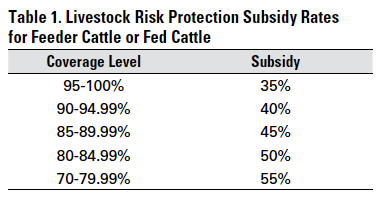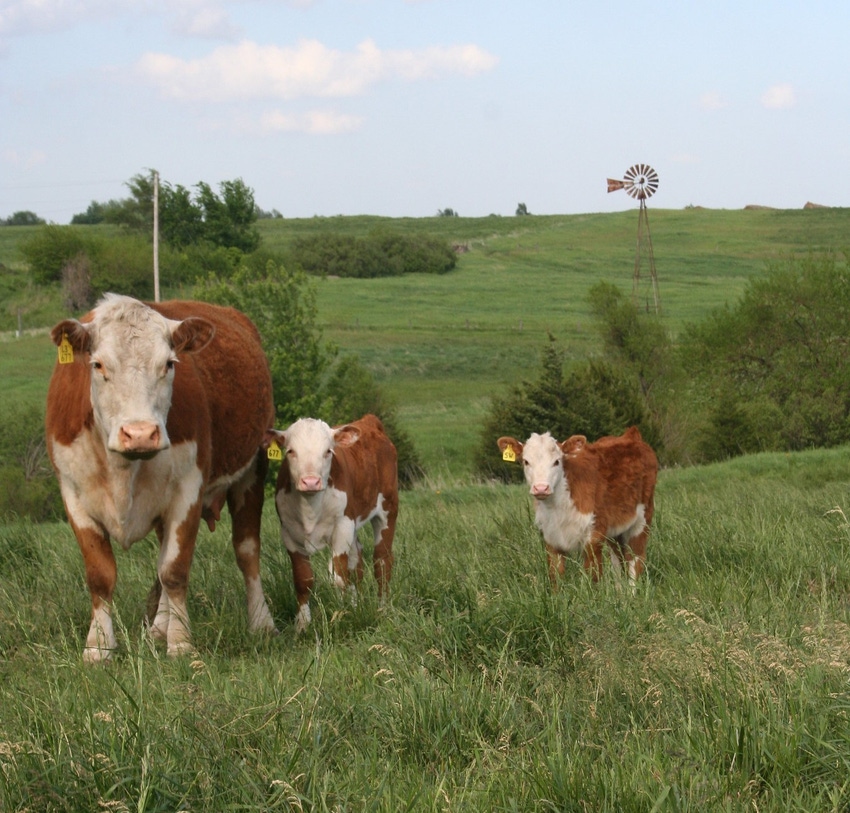Recognizing Animals Threat Protection (LRP) Insurance Policy: A Comprehensive Overview
Navigating the world of animals risk protection (LRP) insurance can be a complicated venture for numerous in the agricultural market. This kind of insurance coverage offers a safety web versus market fluctuations and unpredicted conditions that could influence livestock manufacturers. By comprehending the details of LRP insurance policy, manufacturers can make enlightened choices that might protect their procedures from financial threats. From how LRP insurance coverage works to the different insurance coverage options available, there is much to discover in this comprehensive overview that can potentially form the means livestock manufacturers approach danger management in their organizations.

Just How LRP Insurance Functions
Occasionally, comprehending the technicians of Animals Threat Protection (LRP) insurance can be complex, yet breaking down exactly how it functions can offer quality for farmers and herdsmans. LRP insurance coverage is a threat management device designed to shield livestock manufacturers against unexpected price decreases. The policy enables producers to set a protection degree based upon their specific demands, selecting the variety of head, weight range, and coverage price. When the policy remains in area, if market value drop below the coverage price, manufacturers can file an insurance claim for the distinction. It's crucial to keep in mind that LRP insurance coverage is not a profits assurance; rather, it concentrates solely on price danger protection. The insurance coverage duration generally ranges from 13 to 52 weeks, offering adaptability for manufacturers to pick a duration that aligns with their production cycle. By utilizing LRP insurance, farmers and breeders can reduce the monetary dangers related to changing market prices, making sure greater security in their operations.
Qualification and Coverage Options

When it comes to insurance coverage options, LRP insurance offers producers the flexibility to choose the coverage level, protection period, and endorsements that best match their threat monitoring requirements. Protection levels typically vary from 70% to 100% of the anticipated ending worth of the insured livestock. Producers can additionally choose coverage periods that straighten with their production cycle, whether they are insuring feeder cattle, fed livestock, swine, or lamb. Recommendations such as rate danger defense can better customize protection to secure against unfavorable market variations. By understanding the eligibility requirements and protection choices readily available, livestock producers can make informed decisions to handle danger effectively.
Pros and Cons of LRP Insurance Policy
When assessing Animals Danger Defense (LRP) insurance, it is crucial for animals producers to weigh the drawbacks and benefits integral in this danger administration tool.

Among the main advantages of LRP insurance policy is its ability to supply protection against a decrease in livestock prices. This can assist protect producers from monetary losses resulting from market variations. Additionally, LRP insurance policy supplies a level of versatility, allowing manufacturers to tailor insurance coverage degrees and policy durations to suit their details demands. By securing in an assured price for their animals, producers can much better manage threat and plan for the future.
Nevertheless, there are also some disadvantages to think about. One constraint of LRP insurance is that it does not secure versus all types of risks, such as condition break outs or natural calamities. Premiums can sometimes be costly, especially for manufacturers with big animals herds. It is crucial for manufacturers to thoroughly assess their individual risk direct exposure and monetary situation to figure out if LRP insurance is the ideal risk monitoring device for their procedure.
Comprehending LRP Insurance Premiums

Tips for Taking Full Advantage Of LRP Conveniences
Making the most of the advantages of Animals Danger Protection (LRP) insurance requires tactical preparation and proactive threat monitoring - Bagley Risk Management. To make the most of your LRP coverage, take into consideration the following tips:
Consistently Assess Market Conditions: Stay informed about market patterns and cost fluctuations in the livestock industry. By keeping an eye on these aspects, you can make informed choices about when to buy LRP coverage to secure against potential losses.
Set Realistic Coverage Degrees: When selecting coverage levels, consider your production prices, market price of animals, and additional info potential risks - Bagley Risk Management. Setting practical protection degrees guarantees that you are effectively safeguarded without paying too much for unneeded insurance coverage
Diversify Your Insurance Coverage: Instead of depending entirely on LRP insurance coverage, think about diversifying your risk monitoring methods. Incorporating LRP with various other threat administration tools such as futures agreements or options can offer comprehensive insurance coverage against market uncertainties.
Evaluation and Change Coverage On a regular basis: As market conditions change, occasionally review your LRP insurance coverage to ensure it lines up with your current danger exposure. Readjusting coverage degrees and timing of purchases can help optimize your threat defense method. By following these pointers, you can optimize the advantages of LRP insurance coverage and safeguard your animals procedure against unanticipated dangers.
Verdict
In conclusion, animals risk security (LRP) insurance is a beneficial device for farmers to manage the financial dangers linked with their livestock procedures. By comprehending exactly how LRP works, eligibility and insurance coverage alternatives, in addition to the benefits and drawbacks of this insurance, farmers can make enlightened choices to protect their resources. By meticulously considering LRP costs and executing techniques to maximize benefits, farmers visit site can mitigate possible losses and guarantee the sustainability of their operations.
Livestock manufacturers interested in obtaining Animals Threat Defense (LRP) insurance coverage can explore a variety of eligibility criteria and protection choices customized to their particular animals procedures.When it comes to protection alternatives, LRP insurance policy provides producers the flexibility to pick the coverage degree, coverage period, and endorsements that finest fit their threat management requirements.To understand the intricacies of Livestock Risk Protection (LRP) insurance completely, understanding the variables influencing LRP insurance policy costs is critical. LRP insurance costs are established by different components, including the insurance coverage level picked, the expected cost of animals at the end of the insurance coverage duration, the kind of livestock being insured, and the length of the protection duration.Review and Adjust Insurance Coverage Routinely: As market problems change, occasionally evaluate your LRP protection to ensure it lines up with your existing risk exposure.
Comments on “Proactive Security: Bagley Risk Management Tactics”